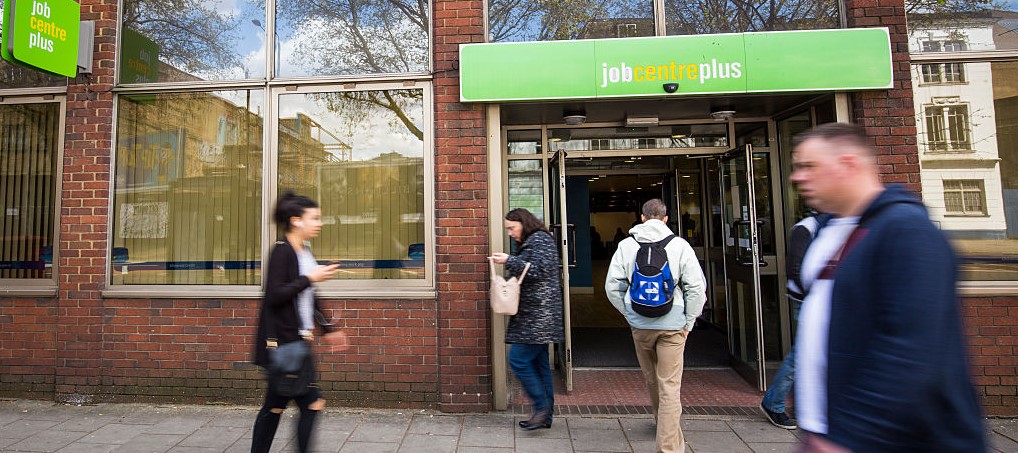Through adversity comes solidarity
New jobless figures released today (July 15) reveal a fragile economic recovery potentially going into reverse – unemployment has risen for the first time in two years.
But the latest figures may obscure another, more worrying trend – the persistence of higher joblessness in the north, especially in the North East region.
The latest ONS figures show that for the three months ending in May 2015, the North East had an unemployment rate of 7.7 per cent – the highest in the UK – compared to the lowest rate of 4.4 per cent in the South East.
The North East also had the lowest number of hours worked per week, averaging little more than 30, while London averaged more than 38 hours.
More and more people have become economically inactive in the North East as well – the rate of economically inactive people, those who are not in work and not actively looking for work, went up by 2.3 per cent, the highest out of any region and now accounts for almost 40 per cent of the entire working-age population.
A report released earlier this year found that the economic divide between the North and South is one that’s persisted despite government promises to bridge the divide and rebalance the economy.
The report, authored by the think tank Centre for Cities, found that for every 12 new jobs that have been created in towns and cities in southern England in the last decade, only one has been generated in the rest of the UK.
Its examination of various urban areas in the UK found that northern towns fared far worse. For example, Blackpool and Grimsby were the only cities in the UK found to have had fewer businesses in 2013 than they did in 2004.
The cities with the highest number of JSA claimants as well as the lowest rates of private sector jobs growth were predominantly northern, including many cities from the North East such as Hull and Middlesbrough.
Another report presented to the Trades Union Congress last year examined the impact of austerity in the North East region, which concluded that the North East suffered disproportionately compared to other parts of the country.
“The North East has experienced considerable economic restructuring over recent decades, as changes to the national and global economy resulted in the rise of service industries, together with decline of manufacturing within the region,” the report noted.
“This severely impacted the North East and many of its residents, resulting in long term unemployment and health inequalities which still affect the region today, despite the development and renaissance of niche manufacturing activities.”
Lack of investment in the area has further contributed to the challenges the region faces. Public sector employment largely helped fill the void left by a restructured economy – indeed, the region has the highest rate of public sector jobs in the entire country.
But this also means that austerity cuts hit the North East harder than they have anywhere else – and are compounded by local multiplier effects and a struggling private sector lacking investment.
Lack of investment
Unite regional secretary for the North East, Karen Reay confirmed what the report found about the challenges that the region faces.
“The main problem is lack of investment,” she said. “After the demise of heavy industry, there was nothing really to take its place.
“We don’t have many large employers – the only one really is Nissan, which only employs 6,000 people. Beyond that, employment is very fragmented.”
“Austerity has really hit the region hard,” she added. “The North East is a Labour stronghold, and after the demise of heavy industry, there was a lot of public sector investment on behalf of Labour governments, but now with the cuts, we’re really hurting.
“Women and young people are suffering the most under the government’s policies – this is true throughout the UK but especially so in the North East.”
But Reay added that the relentless austerity measures being pushed forward by the government have given the people of the North East a newfound sense of purpose.
“Through adversity comes collectiveness and solidarity,” she said. “With the People’s Assembly and various groups, the region has a renewed sense of community. We have a large and growing Unite community membership in the North East, and they’ve done some incredible things together – including setting up various food and clothes banks (pictured) .”
Reay noted that despite the challenges the North East faces, they can be overcome.
“We need investment, and we need better transport links,” she said. “We need to make sure the young people are getting into high-quality apprenticeships and are properly trained in burgeoning industries in the area, such as windfarms.
“We need to ensure a future for our children.”
Unite assistant general secretary Steve Turner pointed to today’s unemployment figures as evidence that a true economic recovery felt by all is far from becoming reality – and it’ll only get worse under austerity, as the North East has already learned.
“The truth is we have an economy where insecure, low paid work is growing and government policies that will make that situation worse,” he said.
“We are deeply concerned about what will happen to this fragile economy when the government takes an even bigger austerity wrecking ball to the economy.
“This fresh wave of cuts will further drain local economies, putting at risk livelihoods and communities,” Turner added.
“Austerity economics combine cruelty to those least to blame and least able to bear the burden, with incompetency as cuts make absolutely no sense in terms of growing the economy, which even the chancellor accepts and is why he has revised down his growth predictions.”
 Like
Like Follow
Follow

